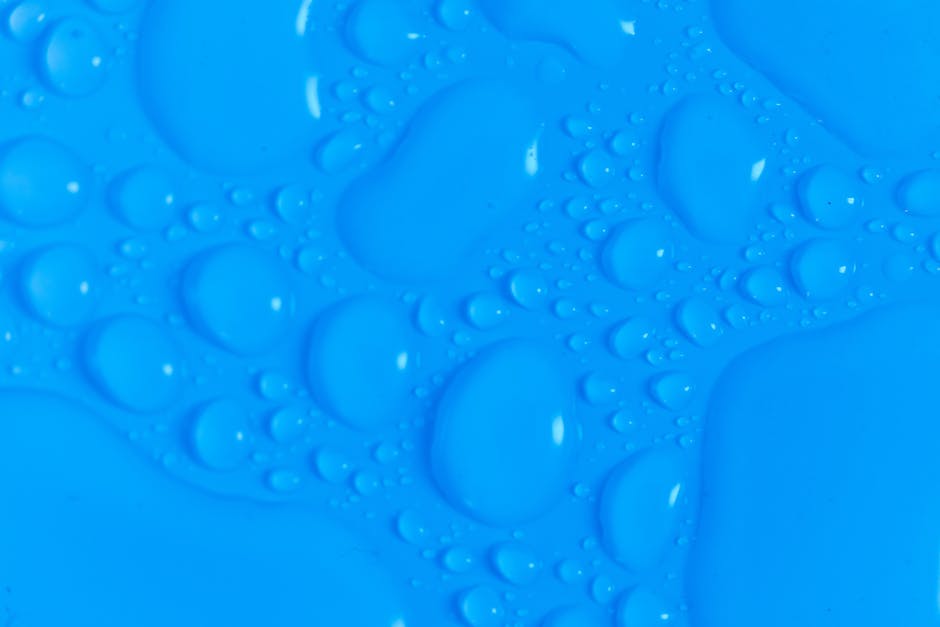In the ever-evolving realm of digital imaging and its extensive applications, the concept of diffusion plays an instrumental role. With the ability to manipulate and transform pixel properties, diffusion is pivotal for various image processing tasks like blurring, blending or smoothing, often providing visually more appealing or analytically more useful renditions of the original images.
This discourse is meticulously structured to offer an in-depth understanding of digital images and the multifaceted process of diffusion, present an all-encompassing study of varied diffusion algorithms crucial for image processing, deliver a hands-on guide on the actual implementation of these algorithms on programming platforms, elucidate the best application strategies considering quality, speed, and resource factors, and finally, shed light on the prevalent challenges in achieving stable diffusion and the promising futuristic trends in the field.
The concept of image resolution comes into play here. Image resolution is essentially the detail an image holds. The higher the resolution, the more pixels contained in the image, and hence, more details. The resolution depends on the pixel dimensions of the image, usually represented in terms of width x height.
Contents
- 1 Diffusion Algorithms: An Overview
- 2 Implementing Diffusion Algorithms
- 3 Best Practices in Diffusion Application
- 3.1 Diving Deeper into Image Diffusion in Digital Images
- 3.2 Non-Linear Diffusion for Edge Enhancement
- 3.3 Choosing the Correct Diffusion Time-Step
- 3.4 Applying Anisotropic Diffusion
- 3.5 ROI-Based Diffusion for Improved Performance
- 3.6 Using Higher-Order PDEs for More Detailed Images
- 3.7 Bilateral and Trilateral Diffusion Filters
- 4 Challenges in Stable Diffusion and Future Trends
The Process of Diffusion in Digital Images
Diffusion in digital images is a process that allows one to manipulate the pixel values in an image, causing effects like blurring or smoothing. It’s much like how perfume diffuses in a room – spreading out around each pixel to a certain distance.
The process typically involves replacing each pixel’s value with a weighted average calculated from nearby pixels. This is done in a way that pixel values tend to ‘diffuse’ across the image, hence the term ‘diffusion‘. The further a pixel is from a given pixel, the less influence it will have on the new value. The strength and range of the diffusion process can be adjusted depending upon the required outcome.
How to Achieve Stable Diffusion in Digital Images
Stable diffusion in digital images necessitates a strategic, informed approach, invoking certain best practices to yield the best possible outcome. The following outlined steps are key to effectively execute this.
- Select the right diffusion strength and range: It’s important to carefully choose the parameters for diffusion strength and range based on the result you want to achieve. A high diffusion strength will introduce a more intense blur, whereas a large diffusion range will impact a more extensive pixel area.
- Prevent over-diffusion: Over-diffusion can lead to a loss of crucial image details. Therefore, facilitating a balanced diffusion process is vital to preserve strong image features and smoothly soften its edges.
- Consider anisotropic diffusion: Anisotropic diffusion, a technique adjusting the diffusion strength depending on direction, allows for edge preservation in images while eliminating noise. This makes it an advantageous method for various applications.
- Explore relevant software: Numerous software options with advanced algorithms and image diffusion tools are accessible. These tools support the application of diffusion and aid in constituting the optimal diffusion levels for specific images.
- Edit post-diffusion: Post-diffusion amendments like fine-tuning or editing might be necessary to attain the desired effect. Involving adjustments to brightness, contrast, or color balance can enhance the final image output.
Bear in mind, the unique requirements of every project or image greatly influence the utilization of these best practices. Hence, an in-depth comprehension of both – the specific image requirements and available tools – is instrumental in producing optimum results.
Diffusion Algorithms: An Overview
Fundamentals of Digital Image Diffusion
Digital image diffusion is a technique employed in image processing to decrease noise and detail within a digital image. Essentially, it involves diffusing image elements into less conspicuous parts of the image. This is carried out by convolving an image with a filtering function — commonly a Gaussian function. Consequently, the image appears smoother and more blurred.
Linear Vs. Non-Linear Diffusion
Two primary categories of diffusion techniques are Linear and Non-Linear Diffusion. Linear Diffusion, also referred to as isotropic diffusion, treats all directions independently and equally. It involves the convolution of the image with a Gaussian filter to produce a smoothed image. The Gaussian filter is typically characterized by a single parameter known as the standard deviation, which determines the amount of smoothing that is applied.
Non-Linear Diffusion, on the other hand, treats different directions differently based on the image data. In contrast to Linear Diffusion which uniformly smooths an image and thus can cause the loss of important details, Non-Linear Diffusion aims to retain important features such as edges while smoothing other areas of the image. This type of diffusion is typically performed using a system of partial differential equations.
Equations for Stable Diffusion
In terms of equations, the general diffusion equation is given by ∂I/∂t = div(D∇I), where I signifies the intensity of the image, t is time, D is the diffusion function, and ∇I is the gradient of the image intensity.
For Linear Diffusion, D is a constant, implying that diffusion is occurring at a constant rate across the image. This results in the isotropic Gaussian smoothing.
However, for Non-Linear Diffusion, D is a function of the gradient magnitude of the image intensity. Non-linear diffusion therefore introduces an edge-stopping function, which slows down the diffusion process near the edges to preserve them.
Ensuring Stability in Diffusion Process
To ensure stability in the diffusion process, attention must be paid to two essential parameters: the time scale and the step size. The time scale should be chosen in such a way that it reflects the scale at which information needs to diffuse across the image, and the step size should be chosen to ensure that the algorithm converges and does not become unstable. An implicit discretization scheme is often used to achieve this.
Another best practice for achieving a stable diffusion process is iterating over multiple smaller time steps rather than fewer larger ones. By doing so, the diffusion process will be more likely to progress gently and naturally, maintaining stability.
The implementation of an adaptive time stepping scheme may also be beneficial, as it dynamically adjusts the time step size based on the data. This can create a more stable output and prevent the diffusion process from getting stuck or oscillating.
Importance of Repetition in Diffusion
Repeating the diffusion process multiple times can also help ensure stability. By iterating the process, the diffusion effect can become more consistent while reducing abrupt changes in the image.
To achieve stable diffusion in digital images, several practices have been developed which consider multiple variables and intricate processes. Among these practices, understanding the role of Linear and Non-linear diffusion holds significant importance.
Equally crucial is the accurate setup of the diffusion equations which helps formulate an effective diffusion plan. Further, the choice of time steps, which determines the effectiveness of the diffusion process, should be made strategically. Lastly, receptivity towards repetition in the diffusion process plays a pivotal role in obtaining a more stable and desirable outcome.

Implementing Diffusion Algorithms
Delving Deeper into Diffusion in Digital Images
With diffusion being a key component in digital image processing, it is crucial to appreciate its role in minimizing noise and distortion within images. Diffusion techniques are essentially deployed to counteract image artifacts, whilst also preserving image features that hold importance.
In a bid to potentially enhance image quality, modern diffusion approaches rely heavily on sophisticated algorithms. These algorithms work by modulating pixel intensities and orchestrating an averaging process across neigh-boring pixels, resulting in an image with superior clarity and well-retained details.
Types of Diffusion Techniques in Digital Imaging
There are different types of diffusion processes adopted in digital images, including linear diffusion, nonlinear isotropic diffusion, and anisotropic diffusion. Linear diffusion is a simple averaging process that blurs all the details in the image indiscriminately.
Conversely, nonlinear isotropic diffusion protects edges while promoting diffusion in flat regions. Anisotropic diffusion, on the other hand, diffuses along the edge directions and suppresses diffusion across them, thus maintaining edges while reducing noise.
Key Factors in Image Diffusion
For stable diffusion in digital images, it’s essential to keep a few factors in mind. These include the diffusion coefficient selection, iterations, and time step size. The diffusion coefficient usually varies based on the image region type; smaller coefficient values in edge regions, and higher values in flat areas. Choosing the number of iterations accurately can ensure optimal results.
As diffusion is an iterative process, the number of iterations often depends on the level of noise and the desired output. In terms of time step size, a larger step size may lead to faster diffusion but can risk instability.
Coding Image Diffusion
Programming the diffusion algorithm involves creating a loop that applies diffusion principles to each pixel. In Python, for instance, packages like NumPy and OpenCV can help manage matrix operations and image i/o, respectively. These libraries are tailor-made for image processing tasks, including digital image diffusion.
Best Practices for Stable Diffusion in Digital Images
One of the best practices for stable diffusion in digital images is the use of anisotropic diffusion which, unlike isotropic diffusion, does not blur image edges, and the image quality remains high. Irrespective of the diffusion technique used, it’s crucial to test multiple parameters like the number of iterations, diffusion constants, and time steps to gauge their effect on the final output. Moreover, always ensure to normalize the processed image to a range suitable for display or further processing.
Another best practice is to preprocess the image with minimal filtering before performing diffusion to remove any initial noise that might affect the diffusion process negatively. In complex images, multi-resolution or scale-space frameworks can also be employed. In these frameworks, the image is diffused and processed at multiple scales to preserve details that might be lost at other scales.
The Fundamental Role of Image Diffusion
Knowing that diffusion techniques in digital images play a vital role in enhancing image quality and noise reduction, understanding their correct application becomes prime. Depending on the specific image application, various diffusion techniques may be required.
Therefore, a comprehensive grasp of the underlying principles and best practices is paramount to achieving the desired result. It’s important to exercise caution during the diffusion process to prevent over-smoothing or excessive sharpening of the images.

Best Practices in Diffusion Application
Diving Deeper into Image Diffusion in Digital Images
Image diffusion, a critical process in digital imaging, greatly affects image quality and its overall effectiveness. Whether the aim is to remove noise, produce a clearer image, or amplify certain features, diffusion procedures prove practically indispensable.
These diffusion methods can fall into two expansive categories: linear and non-linear diffusion. While linear diffusion tends to blur images, non-linear diffusion offers the ability to enhance distinct features with greater precision.
Non-Linear Diffusion for Edge Enhancement
Non-linear diffusion stands as a crucial technique for edge enhancement and noise reduction. It provides better performance than linear versions as it can adapt the diffusion to the local image properties. Non-linear techniques use different diffusivity functions for regions that are within the object (homogeneous regions) and those at the edges, hence preserving vital image details while reducing noise.
Choosing the Correct Diffusion Time-Step
It’s critical to ensure that the diffusion time-step isn’t too large since a large time-step could lead to a less stable and less accurate result. Increasing the time-step beyond the stability limit can lead to highly undependable results or even destabilizing the solution. Hence it’s common practice to select a time-step that provides the right trade-off between accuracy and computational cost.
Applying Anisotropic Diffusion
Anisotropic diffusion is a powerful tool in enhancing digital images. The technique modifies the image’s contrast based on the divergence of a gradient vector field, and consequently, reduces noise while preserving contrast. It’s essential that students can identify when anisotropic diffusion methods are required, and these paradigms are typically used when there is a need for edge detection or noise reduction in images.
ROI-Based Diffusion for Improved Performance
For image applications with definite regions of interest (ROI), students can apply ROI-based diffusion to achieve improved performance. By focusing on areas of interest within the image while ignoring other portions, you can maximize the use of computational resources and expedite diffusion processes. Recognizing and prioritizing critical regions within an image for diffusion processes is a valuable skill in advanced image processing studies.
Using Higher-Order PDEs for More Detailed Images
Higher-order partial differential equations (Higher-order PDEs) are useful in getting more detailed images as they minimize the noise and keep the edges intact. Higher-order PDEs can conduct diffusion in a much more controlled manner than lower-order PDEs and result in images of superior quality.
Bilateral and Trilateral Diffusion Filters
Bilateral and Trilateral filters are other examples of diffusion methods that can be used to preserve edges in images. The filters work by weighting the influence of neighboring pixels based on both their spatial proximity and their intensity, color, or statistical similarity. This results in excellent noise reduction without losing the sharp features in images.
In recap, employing optimal diffusion methodologies in digital image processing can enhance a student’s proficiency in managing challenging scenarios. These practices, when mastered, can upgrade the image quality, suppress noise, and boost processing performance across a range of digital image applications.

Challenges in Stable Diffusion and Future Trends
Stable Diffusion in Digital Imagery: The Complexities and Optimal Strategies
Consistent diffusion in digital imagery stands as a prominent hurdle within the sphere of image processing. A core dilemma involves maintaining the integrity of edge details while preventing over-diffusion. The harmony required is intricate – too conservative an application of diffusion leads to the persistence of noise and unwarranted details.
Contrarily, aggressive diffusion could blur the image, causing significant features, particularly edge details, to be lost. Hence, finding the precise equilibrium that simultaneously smoothens the image and enhances sharpness is an ongoing pursuit.
Importance of Edge Preservation
Edge preservation is a crucial aspect of stable diffusion. It performs a vital role in improving the overall quality of the image by maintaining the key structures and details. Edges establish the borders between different regions of an image, carrying crucial information about object boundaries. Damage or loss of edge information through diffusion can significantly impair the image’s interpretability.
To address this, edge-preserving diffusion techniques are employed. These techniques typically involve partial differential equations (PDE) that use anisotropic diffusion. The anisotropic diffusion can reduce noise while preserving edge details.
The Problem of Over-Diffusion
Over-diffusion is one of the critical challenges faced in image diffusion. It occurs when the diffusion process is excessively applied, which can make the image excessively homogeneous or flat, thus blurring the image and causing loss of important features such as details and edges.
To manage this problem, iteration control in the diffusion process is implemented. The iteration control technique checks and halts the diffusion process at the point when no more significant changes are made in consecutive iterations.
Upcoming Trends and Advancements in Stable Image Diffusion
Advancements in the field of digital image processing are paving the way for more effective diffusion techniques. For instance, newer models, such as nonlinear complex diffusion process models, show potential in addressing the issue of over-diffusion while preserving the edge details.
Another promising development is the integration of artificial intelligence, particularly machine learning algorithms, in image processing. Machine learning algorithms can be trained to identify and preserve edges while diffusing the image, resulting in higher-quality outputs.
Moreover, advancements in computational power allow the application of more complex and efficient diffusion algorithms that were previously impractical due to high processing requirements.
In conclusion
despite the challenges, there are a growing number of solutions and best practices being developed to ensure stable diffusion in digital images. From advanced edge preserving techniques to controlling over-diffusion, from nonlinear complex diffusions models to machine learning algorithms, the field of stable diffusion in digital images is rapidly advancing.
As we navigate towards a more digital-dominated era, innovations and advancements in the field of image processing, particularly in diffusion techniques, are to take the front seat. Establishing proficiency in understanding and executing stable diffusion is a commendable asset for any explorer of this field, as it paves the way for enhanced digital imagery production.
We have discussed the challenges that come forth in this journey, such as Edge Preservation and Over-Diffusion, and it becomes imperative for aspiring pioneers to contribute to overcoming these hurdles.
With the advent of more sophisticated computational methodologies and tools, a brighter future awaits in the arena of stable image diffusion – a future where superior image quality meets efficient resource usage, catalyzing unprecedented progress in digital image processing.

Emad Morpheus is a tech enthusiast with a unique flair for AI and art. Backed by a Computer Science background, he dove into the captivating world of AI-driven image generation five years ago. Since then, he has been honing his skills and sharing his insights on AI art creation through his blog posts. Outside his tech-art sphere, Emad enjoys photography, hiking, and piano.

